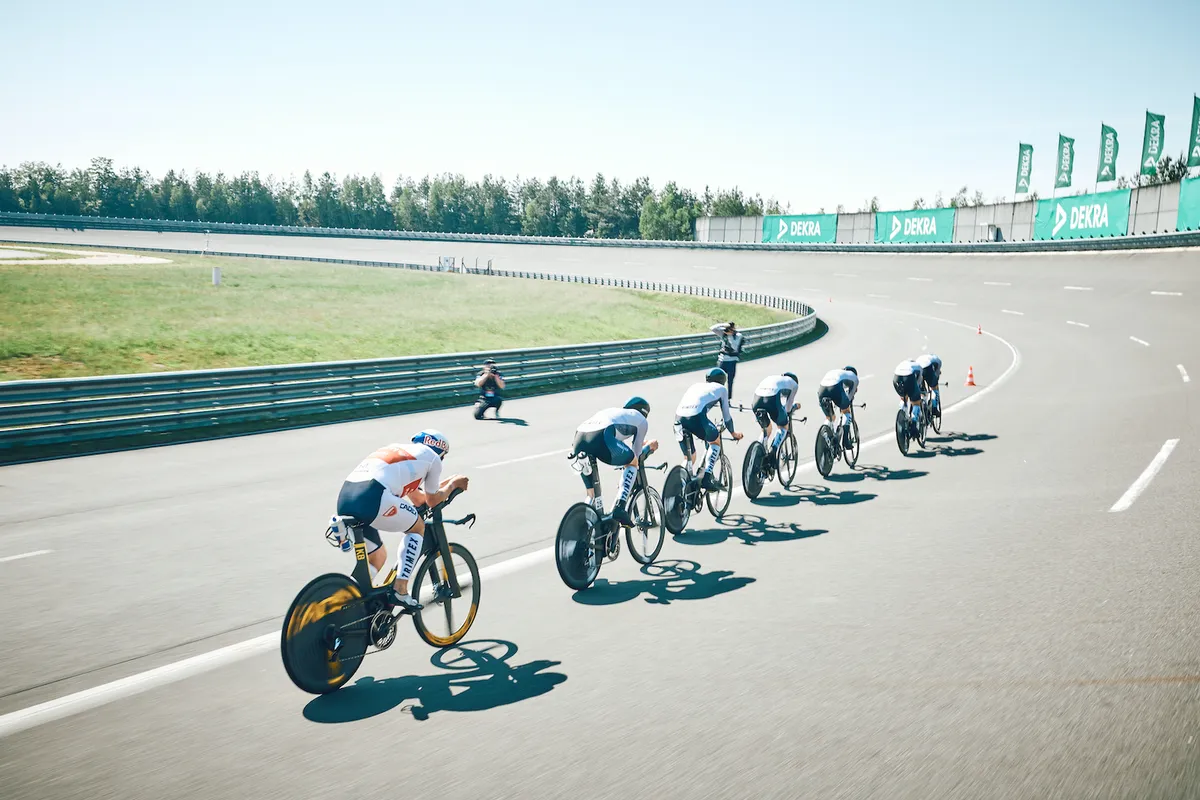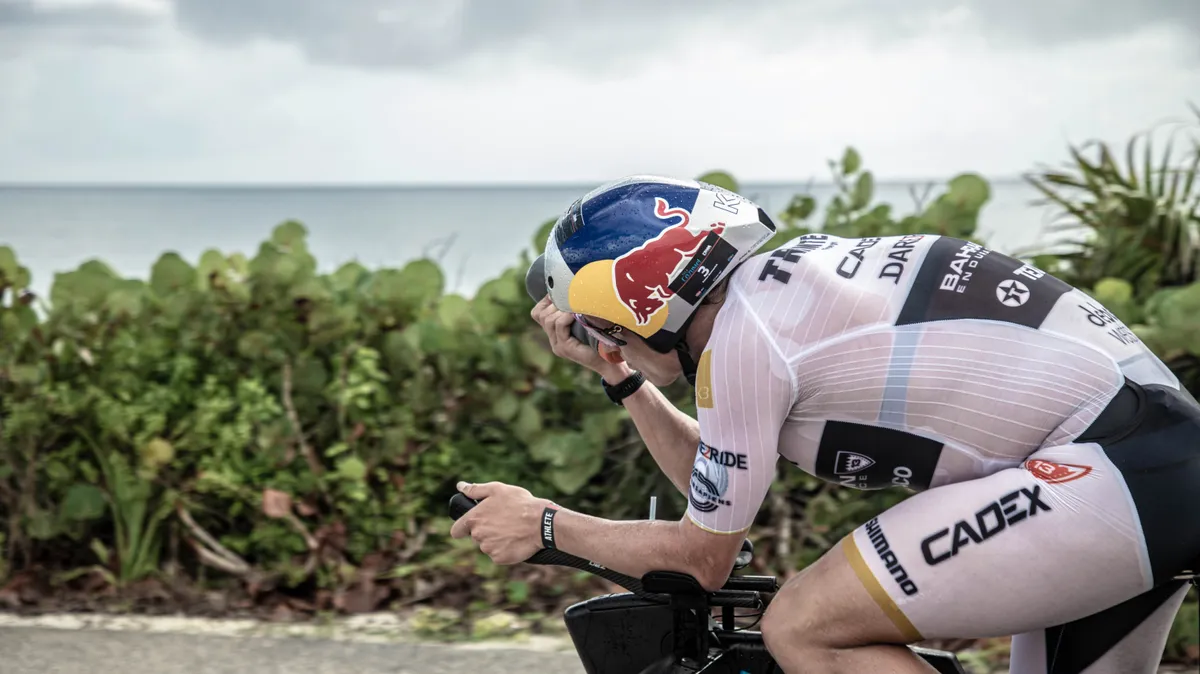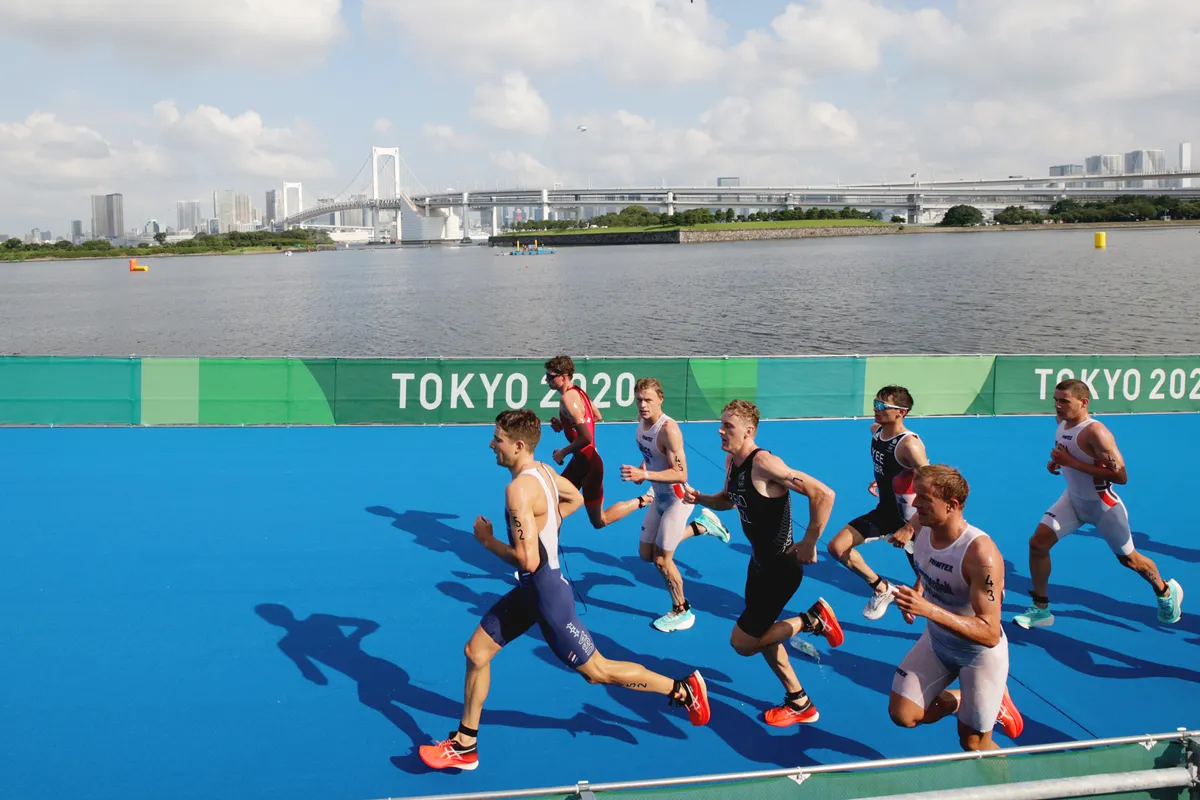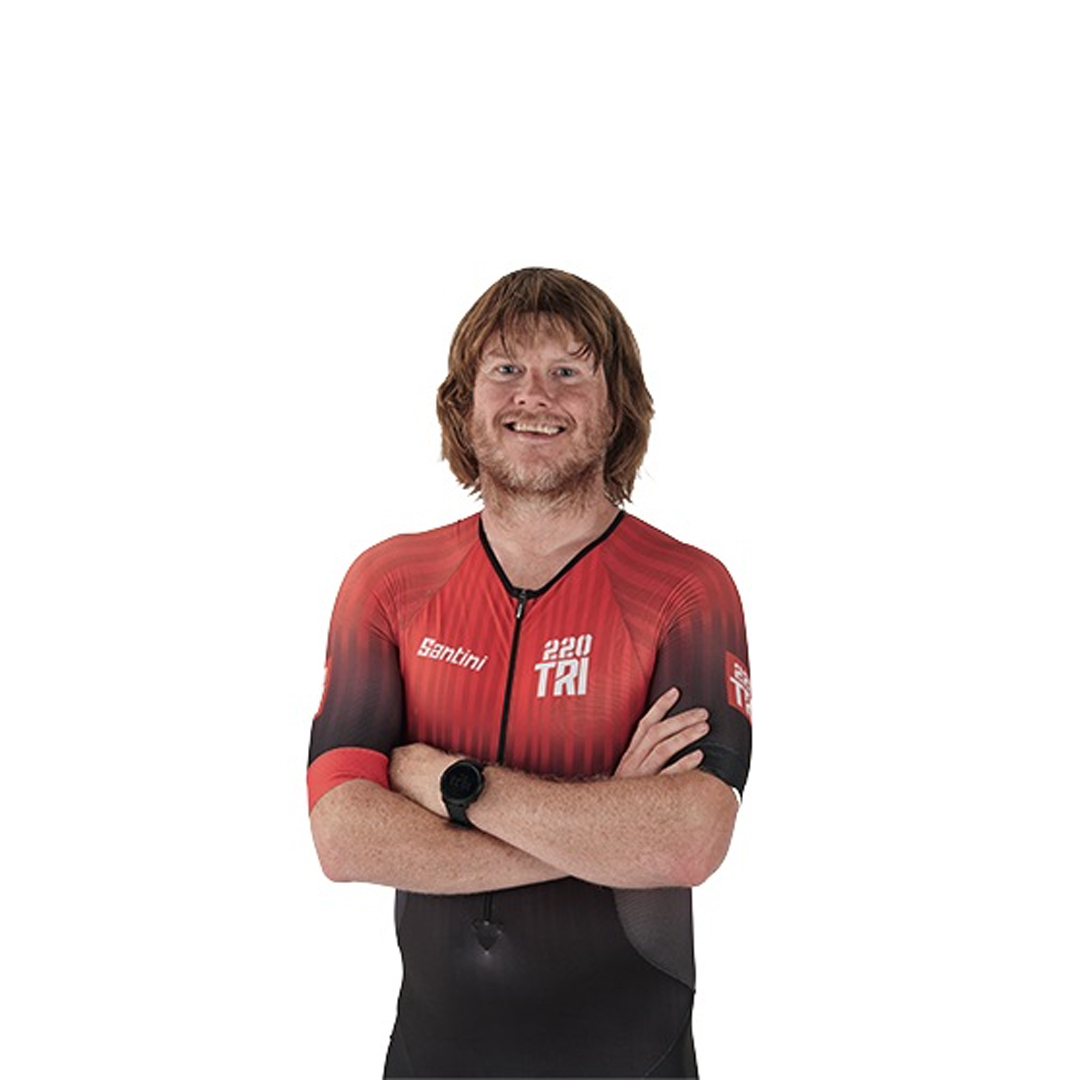Kristian Blummenfelt breaking the Ironman and Ironman Worlds records on debut; Marten van Riel and Laura Philipp smashing the 70.3 records in Dubai in March; Alistair Brownlee storming to 7:38:48 at Ironman Kalmar in August to break the British record… yes, when it comes to the longer forms of racing, we’re in a golden age.
But what’s causing this seismic shift in stamina and speed? Nefarious reasons? Whenever a record’s broken in endurance sport, tongues will wag. But the last professional who tested positive was Ukrainian Daniil Sapunov back in 2020 for taking EPO. So what is it?
Well, as they’re at the heart of this evolution, who better to ask than the Norwegians, more precisely Blummenfelt’s coach Olav Aleksander Bu.
“Not to be disrespectful but in the past, results among iron athletes did not define peak human performance,” Bu surmises. “You can say it was an extreme event in the sense that it was hard but not when it came to understanding the human body. Now I feel we are edging closer.”
How close? Well, Bu continues, if Blummenfelt wasn’t to revert to Olympic distance next year in search of Paris 2024 gold, he’d expect at least another 10 minutes chopped off the Norwegian’s Ironman record of 7:21:12.
If his legs were fresher for the sub-7hr record – he’d won the St. George Ironman Worlds not long previous – and they strengthened the bike, a 6:20hr long-course would have been possible, too.
And, he adds, a big part of this is down to the next wave of technology whose interpretation of data’s made every competitor fear the Norwegians…

What are thermodynamics?
Bu’s a scientist and very much sees triathlon through a physics lens. “We’re looking at thermodynamics,” he says. “In essence, that means to generate speed you have to convert one form of energy into another, be it by aerobic or anaerobic avenues. In the body, energy primarily comes from burning oxygen.
“The Moxy Sensor, which I’ve used since 2015, allows us to peek inside Kristian’s body and see how much oxygen is available in his muscles, and is why we use it nearly every day.”
This, as Bu explains, is a device that measures muscle oxygenation levels. It achieves this via light-emitting diodes and photo detectors, in a broadly similar concept to how your optical heart rate monitor works. It can be used across all three disciplines, sending real-time data to, in the case of Blummenfelt’s bike, his Garmin bike computer.
“When he’s cycling, we’d often attach it to his vastus lateralis [one of the thigh muscles] as that’s a big muscle used during this activity. We know very precisely the oxygen concentration levels of Kristian during the work phase of intervals, the rest phases, how he might respond to altitude…
“We can then compare this data with his lactate profiles to target metabolic improvements far more accurately than by using a heart rate monitor. Knowing these figures helps Kristian pace his sessions, for instance. The oxygen figures are also much more immediate whereas there’s a lag with heart-rate figures.”
The Moxy is compatible with many metabolic analysers but Bu and his team use the VO2 Master. This takes the physiological insight to a deeper level because you can compare muscle oxygenation levels with data like VO2 and respiratory frequency to see just how Blummenfelt is reacting to not only the session but also the environment.
I’m confident that no other team spent more money on rectal thermometers in the Tokyo build-up
Adapting to heat

As Blummenfelt showed in Tokyo, [Ironman] Cozumel and at St. George, he can perform equally well in the heat as in more moderate conditions.
“In theory, perhaps this shouldn’t be possible,” says Bu. “Firstly, he’s larger than his peers, which normally isn’t a good thing when it comes to racing in the heat. Also, he’s from the Nordics, where there’s rarely any heat. In fact, he’s not great in the heat until he’s adapted, and that’s where our protocols came in.”
What those specific protocols are Bu refrains from telling. “We were actually ready to press publish on an article that we’d written,” he reveals. “However, we realised there was a big deviation between how others and us were approaching the heat, so we’ll hold off for a couple years.”
Intellectual property equals competitive advantage. But that doesn’t mean Bu’s totally tight-lipped.
“We’ve used Core’s body-temperature sensor for several years, albeit we use a research version so we have access to all the raw data that the device measures in order to indirectly measure your core temperature. We use it to evaluate garments, heat strategies and the effect of heat training.”
This research version’s designed to help validate the data interpreted from the device to more accurately compare to the gold standard and, in the process, save money. “I’m confident that no other team spent more money on rectal thermometers and core pills (which the athletes would also take rectally) in the build-up to the Olympics,” says Bu.
“I reckon we spent €15,000 on just a few athletes. By validating the Core data, which measures skin temperature and thermal power, again we can ensure how well our athletes are, for example, acclimatised to the heat.”
The white tri-suits in Tokyo were for performance reasons, not aesthetics
Similar to the Moxy Sensor, Bu’s athletes use Core near enough every day, the information again relayed to their Garmins. As mentioned, he won’t reveal specifics about everyday training impact apart from comparing to the current training tools.
“In the same way that if heart rate’s higher one day or power’s the same but with a higher heart rate, fluctuations in core temperature can tell us if an athlete’s beginning to struggle and whether we need to tone things down and be more cautious. We might have a core threshold and if they go over it, they need to quit the session.”

Bu is more revealing about the impact on apparel.
“Our data influenced the tri-suits that Kristian, Gustav [Iden] and Casper [Stornes] wore in Tokyo. You might recall it was almost see-through, and was the result of seeing how the three of them and their core temperatures reacted to different suits, materials and treatments.
“We were looking for the highest possible rate of heat transfer to the surroundings, which was vital in Japan. As you could imagine, it was for performance reasons and not aesthetics.”
It worked, of course, the three of them finishing first (Kristian), eighth (Gustav) and 12th (Casper), respectively.
The accumulation of altitude
Altitude training is nothing new, stimulating beneficial performance adaptations like greater capacity to carry and deliver oxygen to working muscles, and increased number and efficiency of mitochondria (the cells’ energy powerhouses).
What is a more contemporary school of thought is the “accumulation of altitude” where repeated exposure to altitude raises the benchmark of those physical attributes including a higher red blood cell count. It’s certainly the case with Bu and his disciples.
“We’ve spent around five months at altitude this season,” he says, “so more than 50% of the training time. Typically, we alternate altitude depending on where we are in the season, moving between 1,800m and 2,300m.” These camps have taken place at mountainous regions like Font Romeu in the Pyrenees and Sierra Nevada in Spain.
Blummenfelt’s not the only one remaining high in search of higher performance with three-time Ironman world champ Jan Frodeno recently moving to Andorra. But whether Frodeno’s team interpret, and act upon, the data with the same precision as the Norwegians, only the German team knows.
“To quantify the effect of altitude accurately requires something we use called the carbon monoxide re-breathing method. Basically, you use a tracer gas in your blood to find out if your haemoglobin volume and blood volume has increased or not. Not many use this and it really helps us determine when an athlete has really adapted to altitude.”
As Blummenfelt’s shown time and time again, both parties have seemingly become masters of utilising rarefied air for peak performance.
Our athletes race with a much higher carbohydrate uptake than what’s previously been documented (60-90g an hour). Kristian and Gustav can go much, much, much… higher
Higher carb intake

“It was interesting watching the Ironman World Championship and Kristian. He ran it all with a bottle, sipping away, getting it right and, fair play, because I know how wrong it can go.”
The words of Jonny Brownlee, who admitted nutrition’s held him back from cracking 70.3. For Blummenfelt, however, it’s a different story, and one about not high-carbohydrate feeding…
“When it comes to nutrition, we’ve worked closely for many years with Maurten who produce drinks with hydrogels,” says Bu. Hydrogel encapsulates the carbohydrates and so make it gentler on the stomach and cranks up the volume you can consume. That’s the theory… that the Norwegians have taken a step further in practice.
“We’ve invested in a mass spectrometer,” reveals Bu. “When our athletes are racing or training, we ask them to breathe into a bag. We then take this bag straight to the spectrometer.
“We can then measure how much of the carbohydrates that they’ve ingested that they actually combust, because the more carbs you can actually take up from the ones that you’re taking in, the less you have to rely on the carbohydrate that you have in your body.
“Why this is important is down to the same reason athletes try ketones – to preserve precious glycogen reserves in the body. Via spectrometry technology and the use of carbon isotopes, we have protocols that allow our athletes to race with a much higher carbohydrate uptake than what’s previously been documented (60-90g an hour). Kristian and Gustav can go much, much, much… higher.”
And if you can stay high over a long-course event, you can race fast at a high intensity without fatiguing unduly.
So there you have it, if you want to race fast, just measure your metabolism, core temperature, adaptation to altitude and carbohydrate uptake.
Oh, you also need a will to win that’s almost psychotic. But that’s for another time. For now, let’s revel in a golden age of long-course racing.
Top image credit: Sean M. Haffey/Getty Images for Ironman
